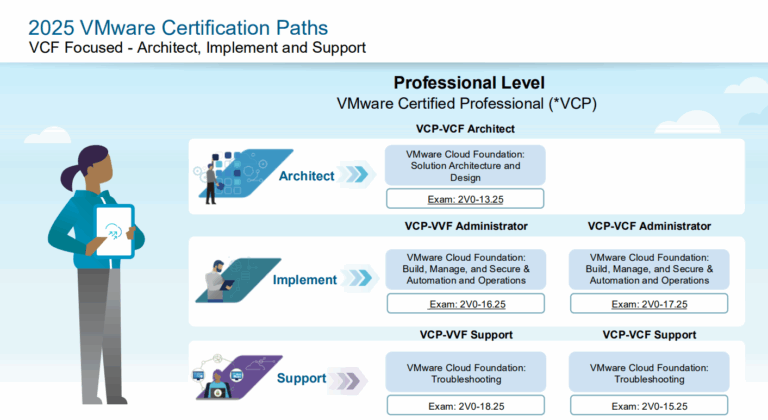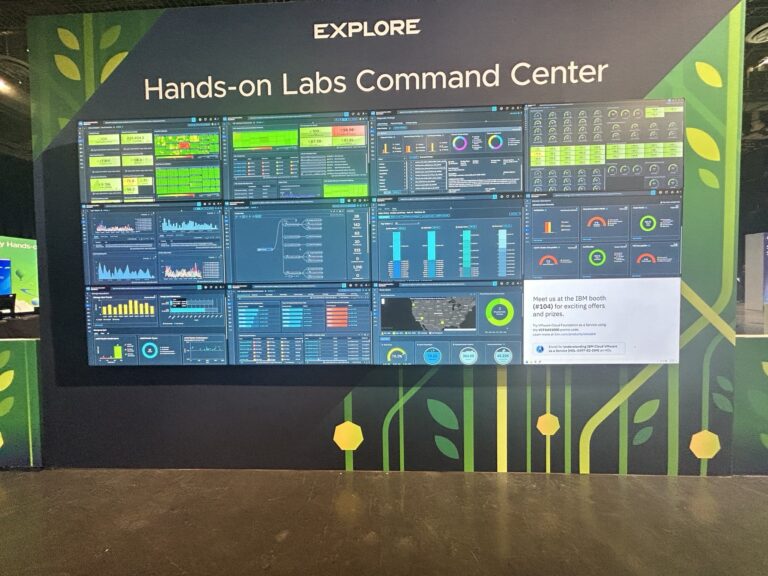E1000E, VMXNET3, and SR-IOV passthrough—are different network interfaces available in VMware virtualization technology. Here’s a brief explanation of each:
- E1000E: E1000E is a virtual network interface card (NIC) model that emulates the Intel 82574 Gigabit Ethernet controller. It is compatible with many operating systems based on a standard driver found in many guest operating systems.
- VMXNET3: VMXNET3 is a para-virtualized network interface highly optimized for performance in VMware virtual environments. It is a high-performance NIC that offers improved throughput, lower CPU utilization, and lower latency compared to E1000E.
- SR-IOV passthrough: SR-IOV (Single Root I/O Virtualization) is a hardware-assisted virtualization technology allowing virtual machines to access physical network interface cards directly. SR-IOV passthrough enables a virtual machine to bypass the virtualization layer and directly access the underlying physical NIC. This can provide better performance and reduced virtualization overhead, but it requires specific hardware support and configuration.
E1000E
Advantages of E1000E:
- Compatibility: The E1000E emulates a widely used Intel Gigabit Ethernet controller and is compatible with various operating systems. It is often a good choice when you need to support older or less standard operating systems that may not have native drivers for other virtual NIC models.
Disadvantages of E1000E:
- Performance: The E1000E is less performant than other virtual NIC models, such as VMXNET3. It requires more CPU resources and can have higher latency than other options.
- Throughput: The E1000E may have lower maximum throughput than other virtual NIC models. This limitation can impact applications that require high network bandwidth, such as data-intensive workloads or virtualized network appliances.
- Advanced features: The E1000E does not support some advanced features in other virtual NIC models. For example, it may not provide features like jumbo frames, hardware offloading, or advanced traffic shaping capabilities.
VMXNET3
Advantages of VMXNET3:
- Performance: VMXNET3 is designed for high-performance networking in virtualized environments. It offers improved throughput, lower CPU utilization, and lower latency than the E1000E virtual NIC. This can result in better overall network performance and responsiveness for virtual machines.
- Scalability: VMXNET3 can scale well in high-density virtualization scenarios. It can handle high network loads and is optimized for modern multi-core processors, efficiently utilizing CPU resources.
- Advanced Features: VMXNET3 supports advanced features such as jumbo frames, multiple transmit and receive queues, hardware offloading for TCP/IP and UDP/IP checksum, and Large Receive Offload (LRO). These features can enhance network performance and offload processing from the virtual machine’s CPU.
Disadvantages of VMXNET3:
- Compatibility: While VMXNET3 is supported by most modern operating systems, some older or less common operating systems may not have native drivers.
- VMware Tools Dependency: VMXNET3 requires VMware Tools to be installed in the guest operating system for full functionality.
SR-IOV
Advantages of SR-IOV:
- Performance: SR-IOV can provide improved performance. By bypassing the virtualization layer, virtual machines can directly access the underlying physical NIC.
- Scalability: SR-IOV allows for better scalability in environments with high network loads. Multiple virtual machines can share a single physical NIC while maintaining near-native performance.
- Network Isolation: SR-IOV enables each virtual machine to have its dedicated virtual function (VF) on the physical NIC, which enhances network isolation and security.
Disadvantages of SR-IOV:
- Hardware Dependency: SR-IOV requires specific hardware support from the physical NIC and motherboard.
- Limited Virtual Machine Mobility: Virtual machines using SR-IOV are bound to the specific physical NIC assigned to them. As a result, live migration or vMotion capabilities between hosts may be limited.
- Configuration Complexity: Setting up SR-IOV requires configuration at the hardware level, hypervisor level, and within the guest operating systems.
Conclusion
In summary, E1000E and VMXNET3 are virtual network interface models within VMware, with VMXNET3 offering superior performance. SR-IOV passthrough, on the other hand, is a technology that allows direct access to physical network interfaces, bypassing the virtualization layer, for even higher performance.
In most cases, VMs with modern Operating Systems should run VMXNET3.




